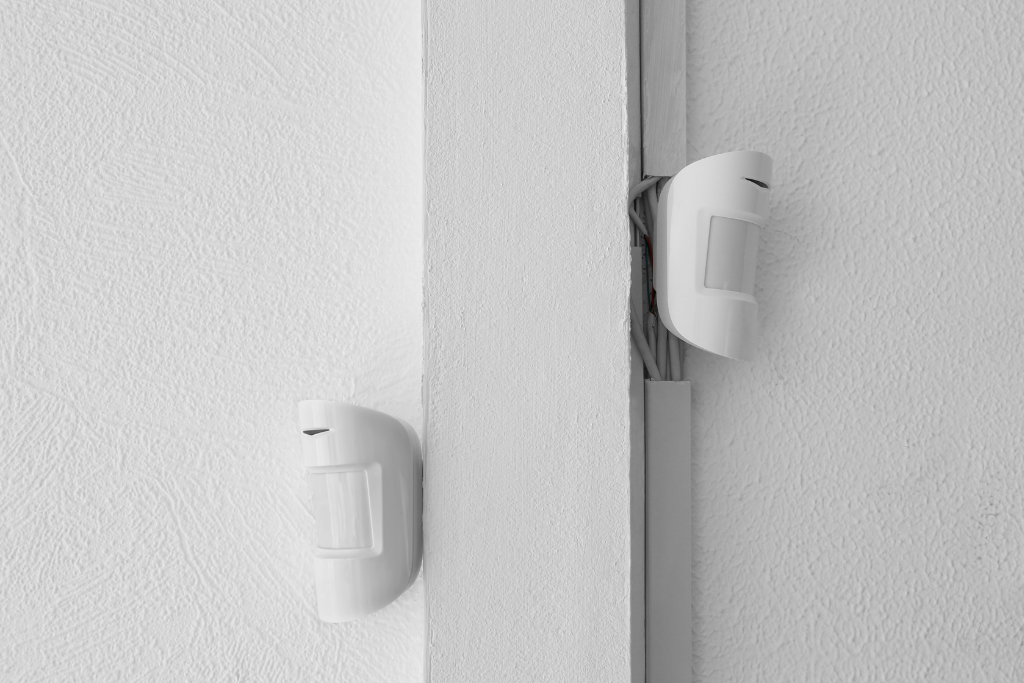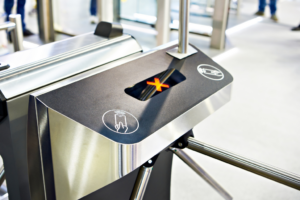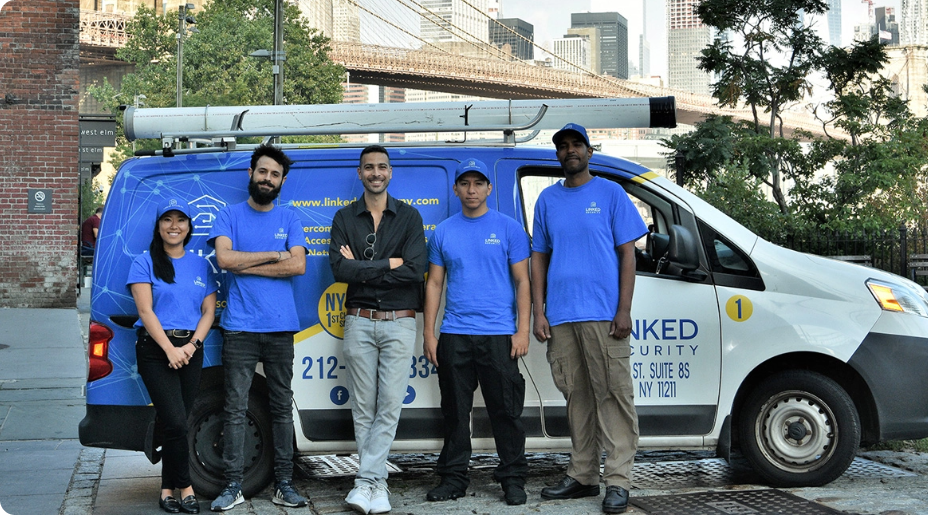Benefits of Utilizing Multiple Sensors and Communication Methods

Ever wondered why multiple sensors and communication methods, redundant information sources, and i2 are crucial in alarm system design?
The use of redundancies ensures that the system remains effective even if one component fails, providing a robust safety net. In this post, we’ll delve into the reasons behind incorporating multiple sensors and communication channels in alarm systems.
From enhancing reliability to minimizing false alarms, these redundancies and sensors play a pivotal role in ensuring the security of homes, businesses, and individuals.
Let’s unravel the significance of these redundancies and sensors for creating dependable alarm systems.
The Critical Role of Redundancy in Home Security
Continuous Protection
Redundancies in designing an alarm system with sensor alternatives are essential for ensuring continuous protection.
By using multiple sensors and communication methods, the system can maintain its functionality even if one component fails.
For example, a security system with both motion detectors and door/window sensors ensures that any unauthorized entry is detected regardless of the method used.
This spurious redundancy plays a critical role in home security by providing backup measures to cover potential weaknesses or failures, sensor inconsistencies, and unknown cases.
In the event of i2 sensor malfunction or tampering, redundant components act as fail-safes to maintain the overall integrity of the alarm system.
Enhanced System Reliability
Multiple layers of sensor defense enhance reliability by reducing the likelihood of false alarms or missed alerts. For instance, integrating both Wi-Fi and cellular communication methods (i1) allows an alarm system (sensor) to remain operational even if one network experiences interference or outage.
This dual approach significantly reduces the risk of communication failure during critical situations.
Moreover, redundancies also address environmental factors such as power outages or natural disasters.
By incorporating battery backups and alternative power sources, an alarm system remains functional when faced with unexpected disruptions to regular power supply.
Enhancing Precision and Reliability with Multiple Sensors
Diverse Detection Capabilities
Multiple sensors in an alarm system offer various detection capabilities. For instance, while a motion sensor detects movement, a contact sensor can identify the opening of doors or windows.
By utilizing multiple sensors and a dataset, the system can accurately detect different types of security threats.
This comprehensive coverage increases the accuracy of threat identification. For example, if an intruder manages to evade one type of sensor, another sensor might still pick up their presence.
This redundancy ensures that no potential threat goes undetected.
Comprehensive Coverage for Varied Security Risks
Using multiple methods of communication also enhances precision and reliability in alarm systems. For instance, integrating both Wi-Fi and cellular communication methods provides redundancy in case one network experiences issues. This ensures that alerts are always transmitted effectively.
Moreover, by incorporating diverse sensors and communication methods into the design, the system becomes more efficient at quantifying threats accurately.
The combination of sensors and machine learning algorithms allows for greater specificity in identifying potential risks through data analysis from multiple sources simultaneously.
Sensor Fusion for Improved Alarm System Safety
Enhanced Threat Assessment
Integrating multiple sensors and communication methods into alarm systems significantly improves their overall performance.
By combining data from multiple sensors, the system can accurately assess potential threats in a specific case, leading to more reliable and precise threat assessments following a specified spec.
For example, a security alarm system that utilizes both motion detectors and door/window sensors can provide a more comprehensive understanding of an intrusion attempt.
This integration allows the sensor system to differentiate between false alarms caused by pets or environmental factors and genuine security breaches.
Utilizing various types of sensors such as motion detectors, door/window contacts, or even glass break detectors enhances the ability of the alarm system to proactively detect potential security risks.
For instance, in a scenario where an intruder attempts to bypass one type of sensor, other redundant sensors will still capture the activity, ensuring comprehensive threat assessment.
Proactive Security Measures
The redundancy provided by multiple sensors also enables proactive security measures. By having different types of sensor detection methods integrated into the alarm system, it becomes less susceptible to failures or tampering attempts.
For instance, if an intruder manages to disable one sensor through physical means or electronic interference, other active sensors remain functional and continue monitoring for any suspicious activities.
Types of Redundancy in Modern Alarm Systems
Diverse Sensor Types
Diverse sensor types, such as motion sensors, glass break detectors, and magnetic contacts, are used to provide complementary functionalities.
For instance, while a motion sensor can detect movement within a room, a glass break detector is designed to sense the sound frequency produced when glass breaks. By using multiple sensors, the alarm system gains comprehensive coverage and accuracy.
Having diverse sensor types not only ensures that different aspects of security are covered but also reduces the risk of false alarms.
For example, if an intruder attempts to bypass one type of sensor, other sensors can still detect their presence and trigger the alarm.
Backup Power Sources
Backup power sources play a crucial role in ensuring uninterrupted surveillance for alarm systems.
In case of a power outage or deliberate tampering with the main power supply, backup batteries or generators kick in to keep the system operational.
Imagine if an intruder cuts off the electricity supply before attempting a break-in; without backup power sources and sensors in place, the entire security system would be rendered ineffective.
However, with redundant power solutions like backup batteries or generators ready to take over during outages or emergencies, continuous monitoring and protection are guaranteed.
Redundant Communication Channels
In modern alarm systems, design redundancies include redundant communication channels and sensors that fortify system resilience by using multiple methods of communication such as Wi-Fi connectivity alongside cellular network connection.
This dual approach ensures that even if one channel fails due to interference or technical issues like signal jamming – another channel remains available for transmitting alerts and data.
Handling Sensor Failures and Faults Effectively
Swift Detection and Isolation
Using multiple sensors and communication methods, including spec, is crucial for the swift detection and isolation of faulty sensors. Imagine if a single sensor spec malfunctions, the entire security system could be compromised.
By having redundant sensors, any malfunction can be quickly identified without affecting the overall functionality of the alarm system.
Implementing automated self-diagnostic features and sensors ensures that any faults or failures are promptly detected.
These features enable the alarm system to continuously monitor the spec of each sensor, allowing for immediate identification of any issues.
For example, if a smoke detector sensor experiences a fault, an automated self-diagnostic feature will swiftly detect this issue and trigger necessary actions without human intervention.
Seamless Transition to Backup Sensors
In addition to swift detection, ensuring a seamless transition to backup sensors is critical in handling sensor failures effectively.
Redundant sensors provide a fail-safe mechanism by automatically switching over to backup sensors when primary ones encounter faults or failures.
This redundancy guarantees continuous monitoring and protection even when certain sensors are out of commission.
The Significance of Multiple Communication Paths
Reducing Signal Loss and Interference
Using multiple sensors and multiple methods of communication in alarm system design reduces the risk of signal loss or interference.
Imagine relying solely on one sensor or communication method; any malfunction could go unnoticed, leaving your property vulnerable.
By incorporating redundancy, such as both Wi-Fi and cellular communication paths, the system can seamlessly switch between them if one fails. This ensures that sensor alarm signals always reach the monitoring center.
This redundancy also enhances system responsiveness to potential threats. For instance, if a burglar attempts to disable a single sensor, other sensors will still detect movement or entry, triggering an alert.
Similarly, having redundant communication paths means that even if an intruder tries to block one path—by cutting a phone line—the system can quickly switch to another path for sending alerts.
Reliable Transmission of Alarm Signals
In addition to reducing risks and enhancing responsiveness, utilizing multiple sensors and communication methods facilitates the reliable transmission of alarm signals.
This is crucial for ensuring that emergency responders are promptly notified in case of a security breach or fire outbreak.
By transmitting signals through diverse channels simultaneously—such as landline phone connections, cellular networks, and sensors—the likelihood of successful signal transmission increases.
Ensuring Comprehensive Coverage Through Redundant Design
Minimizing Blind Spots
Having redundant information sources and multiple sensors in an alarm system is essential for ensuring comprehensive coverage. By including overlapping sensor coverage, the system minimizes blind spots, leaving no room for potential vulnerabilities to be exploited.
For instance, a security system with redundant motion sensors both indoors and outdoors can effectively detect any unauthorized movement from various entry points.
This redundancy in sensor placement satisfies the requirement for robust protection against circumvention attempts.
If one sensor fails or is compromised, there are additional layers of defense provided by other sensors. This ensures that even if an intruder manages to bypass one sensor, it will still be detected by another.
Addressing Vulnerabilities
The inclusion of redundant methods of communication and sensors also plays a crucial role in addressing vulnerabilities in security systems.
For example, having a combination of Wi-Fi connectivity and cellular backup enables the alarm system to remain operational even if one method experiences inconsistency or failure due to external factors like power outages or network issues.
Future Trends in Alarm System Sensor Fusion
Advancements in Integration
The future of alarm system design revolves around embracing technological advancements. Future systems will integrate multiple sensors using AI-driven algorithms to enhance overall performance.
By leveraging the power of artificial intelligence, these systems can intelligently process data from various sensors to accurately detect and respond to potential threats.
Incorporating diverse sensor types such as motion detectors, glass break sensors, and environmental sensors ensures comprehensive coverage.
For instance, a combination of infrared motion detection and acoustic glass break sensors provides redundancy by addressing different aspects of security concerns.
This redundant approach significantly reduces the likelihood of false alarms while enhancing the system’s ability to detect genuine security breaches.
Smart Home Integration
Another significant trend involves integrating alarm systems with smart home technology for seamless automation and control.
Through this integration, homeowners can remotely monitor their properties using smartphones or other connected devices.
Smart home platforms enable users to receive real-time alerts and notifications on multiple devices simultaneously through various communication channels such as mobile apps, email, or SMS.
This fusion not only enhances convenience but also increases the reliability and responsiveness of alarm systems.
In case one communication method fails due to network issues or technical problems, redundant communication channels ensure that critical alerts still reach the homeowner without delay.
Conclusion
Congratulations on reaching the end of our exploration into the world of alarm system redundancies!
By now, you understand the critical role of employing multiple sensors and communication methods to ensure the safety and reliability of modern alarm systems.
The fusion of various sensors not only enhances precision but also fortifies the system against potential failures.
Similarly, integrating multiple communication paths ensures that any disturbances or faults are promptly addressed, guaranteeing comprehensive coverage.
As technology continues to advance, embracing these redundant design principles will be pivotal in shaping the future of alarm system safety.
Now that you comprehend the significance of redundancy in alarm systems, consider applying these insights to your security setup.
Whether it’s upgrading your home security system or advising others on best practices, sharing this knowledge can make a tangible difference in safeguarding lives and property.
Stay informed about the latest trends in sensor fusion and redundancy to stay ahead in ensuring safety and security for yourself and those around you.
Frequently Asked Questions
Why do alarm systems use multiple sensors?
Alarm systems use multiple sensors to enhance precision and reliability. By incorporating different types of sensors, such as motion detectors, door/window contacts, and glass break detectors, the system can accurately detect a wider range of security threats.
How does sensor fusion improve alarm system safety?
Sensor fusion combines data from multiple sensors to provide a more comprehensive understanding of the environment. This enhances safety by minimizing false alarms and increasing the accuracy of threat detection. It’s like having multiple sets of eyes working together for better awareness.
What are the types of redundancies in modern alarm systems?
Modern alarm systems employ hardware redundancies (multiple sensors) and communication redundancies (multiple methods of alerting). Hardware redundancies ensure that if one sensor fails, others can still provide coverage. Communication redundancies guarantee that alerts reach monitoring centers even if one communication path is compromised.
How do redundant designs handle sensor failures effectively?
Redundant designs handle sensor failures by implementing backup mechanisms. For example, if a motion detector malfunctions, door/window contacts or glass break detectors can still detect intrusions. This ensures that any potential gaps in security coverage are minimized or eliminated.
Why is it important for an alarm system to have multiple communication paths?
Having multiple communication paths is crucial for ensuring that alerts reach monitoring centers reliably. In case one communication method experiences interference or failure, alternative paths such as cellular networks or internet connectivity serve as backups to maintain constant vigilance.





